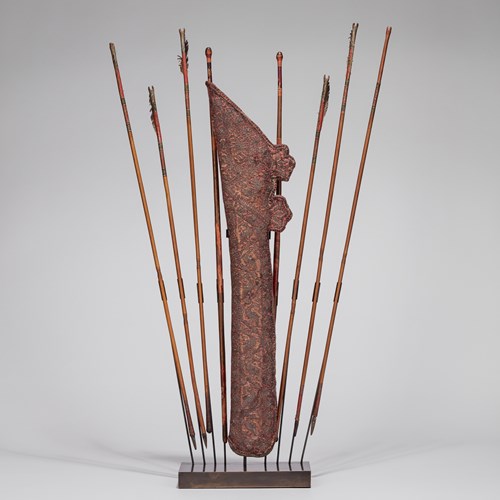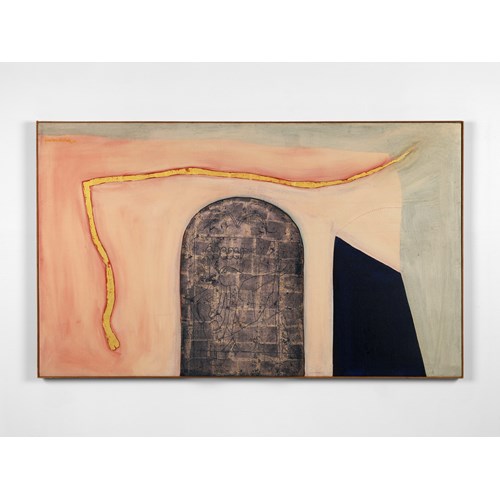Marketplace
Bronze Box with Arabic Inscription
This solid-bronze circular box and cover date to the early Qing dynasty. The Arabic inscription on the lid, in reserve on a ring-punched ground, reads: الحمد الله (Alhamdulillah), meaning 'praise be to God'. The reverse is cast with a mark which reads 'made in the Zhengde period' (1505-1521).1 The Zhengde Emperor (Zhu Houzhan) was the 11th emperor of the Ming dynasty, reigning from 1505-1521.2 However, Zhengde reign marks (nianhao) continued to be used into the 17th and 18th century. The form of this box is in keeping with bronze boxes of the early Qing dynasty in the British Museum such as accession no. 1894,0108.26, a box of similar height but greater diameter, with the Shahada inscribed in Arabic on the lid, which has been dated to 1644-1800. A second Chinese bronze box in the British Museum (accession no. 1894,0108.30) dated to the Qing dynasty and with very similar dimensions to the present box, is also inscribed with الحمد الله (Alhamdulillah).
This box may once have been part of a set, comprising a censer and a tool vase, designed to sit on a scholar's desk. Incense was used both to perfume rooms and clothing, but also as a mindfulness practice in Buddhist worship and for Muslim scholars.3
n.b. accession nos are clickable links
1 With thanks to Dr. Rose Kerr.
2 'Zhengde', Encyclopedia Britannica, 1 January 2024. Retrieved from https://www.britannica.com/biography/Zhengde on 7 February 2024.
3 'A Brief History of Incense in China', The Feuerle Collection. Retrieved from https://www.thefeuerlecollection.org/de/history-of-incense/ on 7 February 2024.
This box may once have been part of a set, comprising a censer and a tool vase, designed to sit on a scholar's desk. Incense was used both to perfume rooms and clothing, but also as a mindfulness practice in Buddhist worship and for Muslim scholars.3
n.b. accession nos are clickable links
1 With thanks to Dr. Rose Kerr.
2 'Zhengde', Encyclopedia Britannica, 1 January 2024. Retrieved from https://www.britannica.com/biography/Zhengde on 7 February 2024.
3 'A Brief History of Incense in China', The Feuerle Collection. Retrieved from https://www.thefeuerlecollection.org/de/history-of-incense/ on 7 February 2024.
More artworks from the Gallery




 Flower (Large)_T638206163546965508.JPG?width=500&height=500&mode=pad&scale=both&qlt=90&format=jpg)



 Ionia_T638206163534868960.jpg?width=500&height=500&mode=pad&scale=both&qlt=90&format=jpg)
